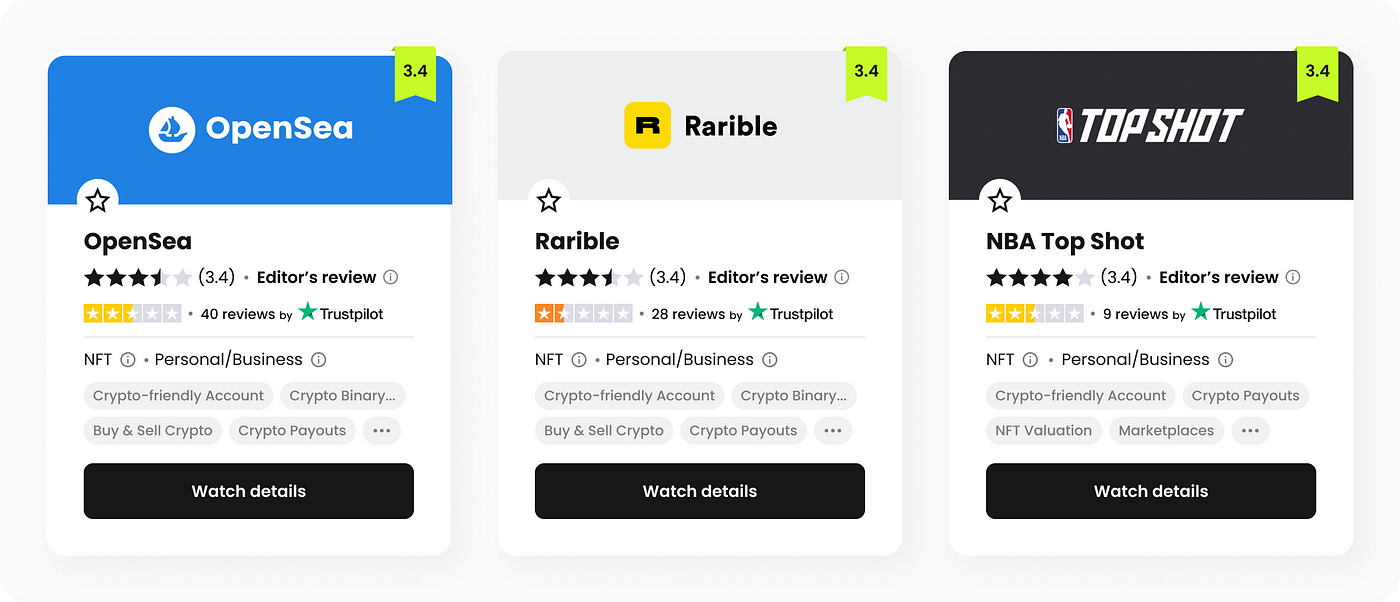Crypto NFT: Reshaping the Art World
Art represents a special type of aesthetic, cognitive, and communication human activity that tends to adapt to all modern trends. People have ceased to perceive art only as a kind of classical physical expression of creativity. With ever greater frequency, we see how art is breathing in the digital alternative. In recent years, the so-called non-fungible tokens (NFTs) have caused an industry boom. For newcomers, the NFT market may seem complicated as the use of blockchain technology in the art world is an unusual thing. But interest is soaring. Thus, according to Reuters, citing DappRadar data, NFT sales in the first quarter of 2021 amounted to $1.23 billion, and in the second quarter $1.24 billion. These numbers are well ahead of the first half of 2020 when NFT’s sales were $13.7 million.
What are NFTs?
Using blockchain technology, NFT can maintain its uniqueness in the digital space, avoiding the possibility of plagiarism and copying. In this way, it brings an opportunity to protect the original work of art. The artist’s “pet project” represented in the form of digital tokens is encrypted with his/her signature on the blockchain. It gives access to digital accounting, as well as verification of authenticity and art ownership. Art created in this manner has a unique value assigned to the highest bidder.
Think of a computer file combined with proof of ownership and authenticity — that’s what NFT is. In combination with smart contracts, users have the flexibility for a wide range of NFT use cases. For users and artists, it is a prospect of the formation of advanced contractual structures and agreements. Underlying mechanisms of the blockchain make smart contracts transparent, tamper-proof, and verifiable in real-time. For example, a user can access a gif embedded in NFT through a smart contract. Simply put, the author of the work and the user accept the terms using a smart contract. The user pays an agreed amount, and then he gets access to a particular file. This kind of deal makes easy any arbitration process in the future.
Crypto art evolution
The history of NFT begins on May 3, 2014, when a man named Kevin McCoy first minted his non-fungible token called Quantum. Its cost was $1.4 million.
Crypto art received a significant impetus during the creation of the Ethereum blockchain network in 2015. It became the starting point for young startups to sell their ideas, bypassing the regulatory schemes. This blockchain has become the guiding link for art. A prominent example of NFT is CryptoKitties. This online game appeared in 2017, where players are the owners of the Stoner Cats NFT on the Ethereum blockchain. With 100 cats and a family tree function at the first release, the game found resonance and interest. The average selling price of a CryptoKit is up to $100, while individual CryptoKitties are selling for over $300,000.
Over time, the crypto art market has gained the prospect of further development. Another impulse was the development of trading platforms for gamers, where players can purchase unique game items for themselves and trade them depending on the in-game market situation.
Being fed up with years of creating free content on platforms like Facebook and Instagram, many digital artists have decided to dive into crypto art. These artists see NFTs’ future transform both the creative process and the way the world values art. With an opportunity of verified ownership, people have new potential to develop their creative careers and gain more payback in the corresponding amount.
To begin your NFT journey
Crypto art became a trending market today. With Finscanner, you can have easy access to many leading NFT platforms. Here are some you may find interesting:

OpenSea — is one of the first NFT marketplaces on the market. It is a reliable decentralized service with a large selection of tokens. In the future, developers promise to add more blockchain networks to the protocol to keep the platform competitive.
NBA Top Shot — is an NFT project from Dapper Labs on the Flow blockchain, which can be called a marketplace of short videos of the best moments from NBA games, presented in the form of unique collectibles, non-fungible tokens (NFT). The project is officially licensed by the NBA. Each token holder receives digital rights at a short video of some moment of the game, and therefore adds something unique to his collection, which he can dispose of at his own discretion.
Rarible — is a marketplace that invites users to trade liquid intellectual property and any digital content licensed through NFT tokens. One of the advantages is a simplified interface for creating NFT tokens in a few clicks. Another feature is the lack of pre-moderation when creating tokens.
Feel free to find more NFT projects at the Finscanner marketplace to explore all the opportunities of the crypto art world!
Read also

Trends of 2022 — NFT, Metaverse and GameFi
The digital currency industry has experienced accelerated growth in 2021, with many new trends emerging.

Best Crypto Payment Gateways to Connect to in 2022
If you'd like to implement innovation in your startup or business, you better be looking for transaction...